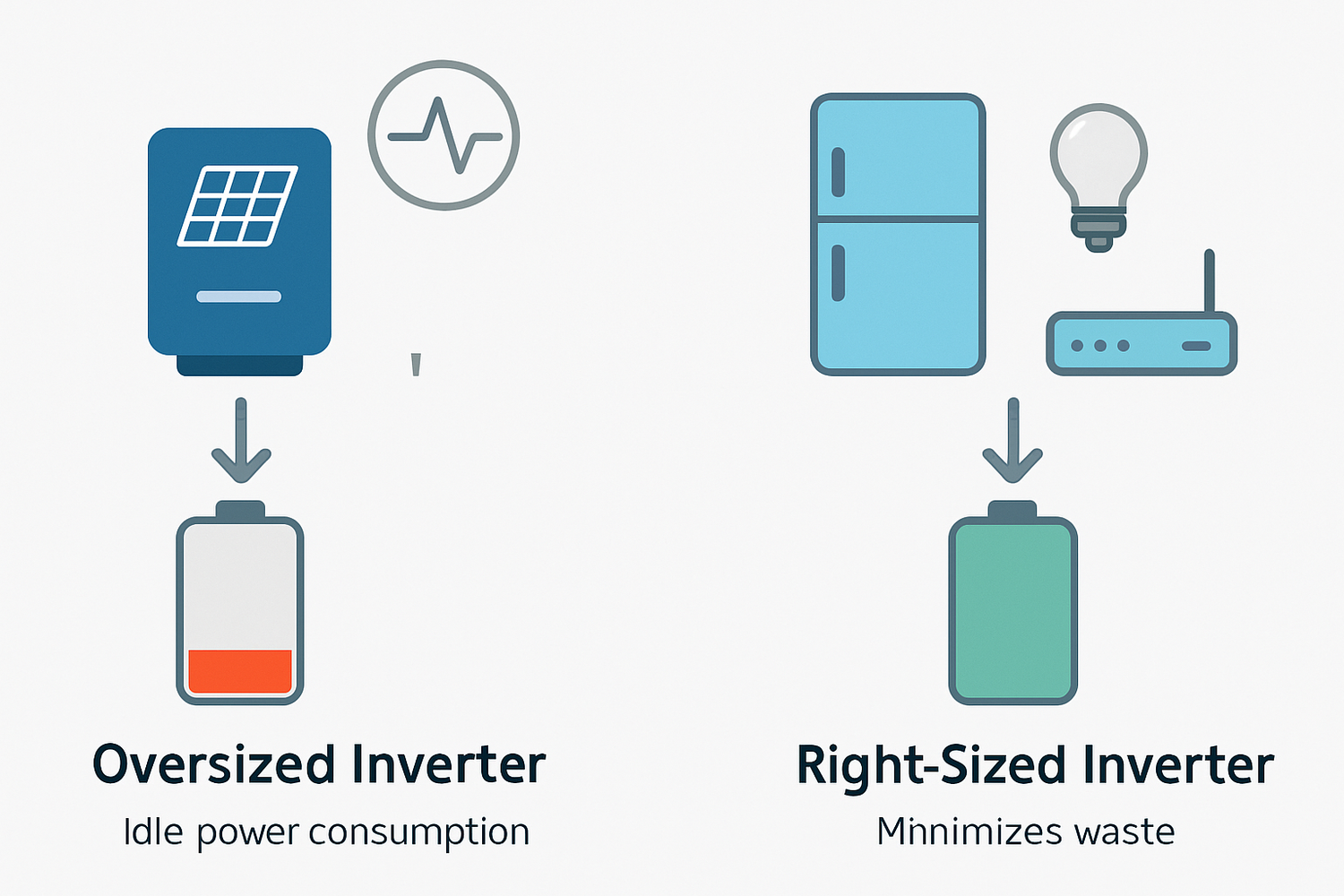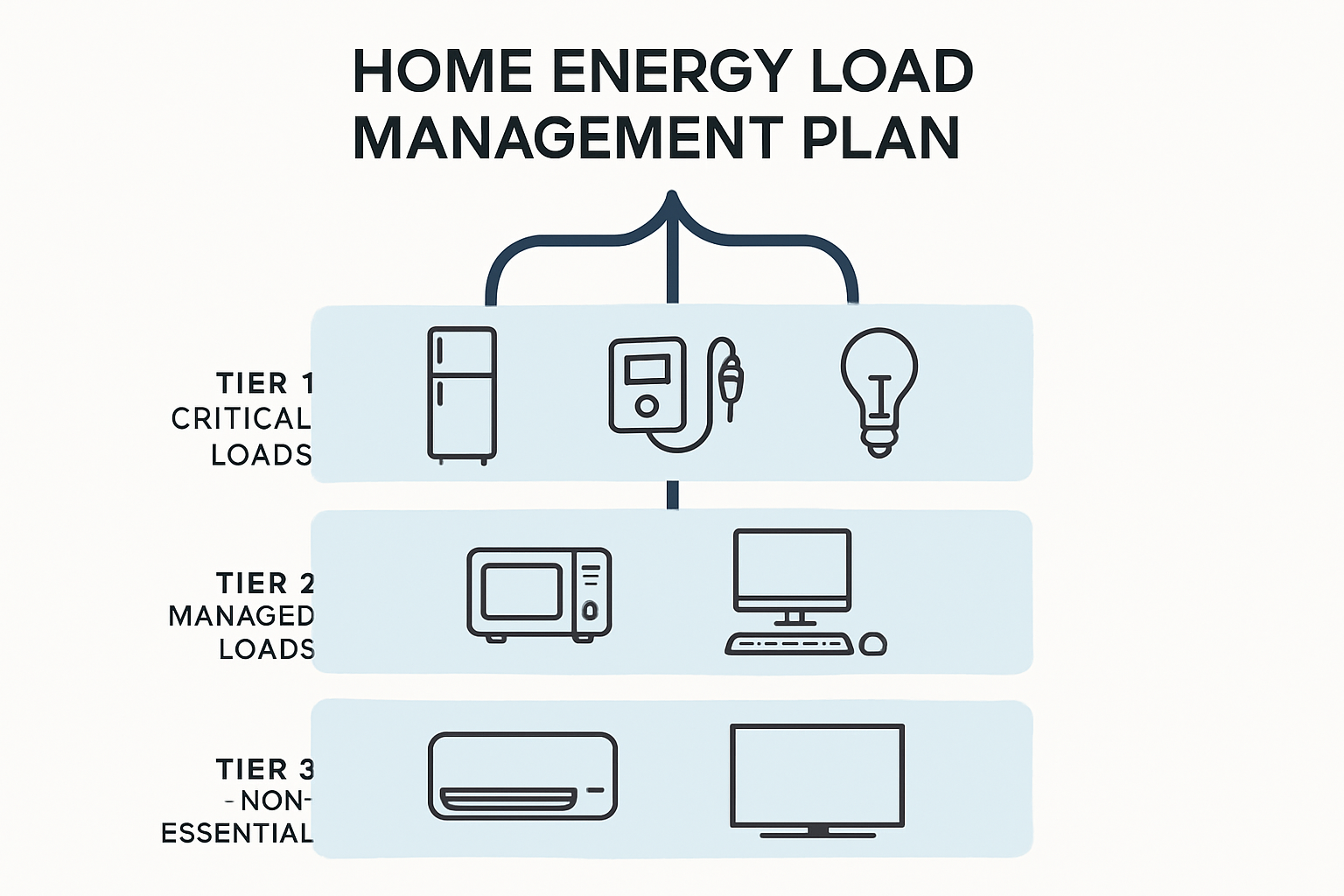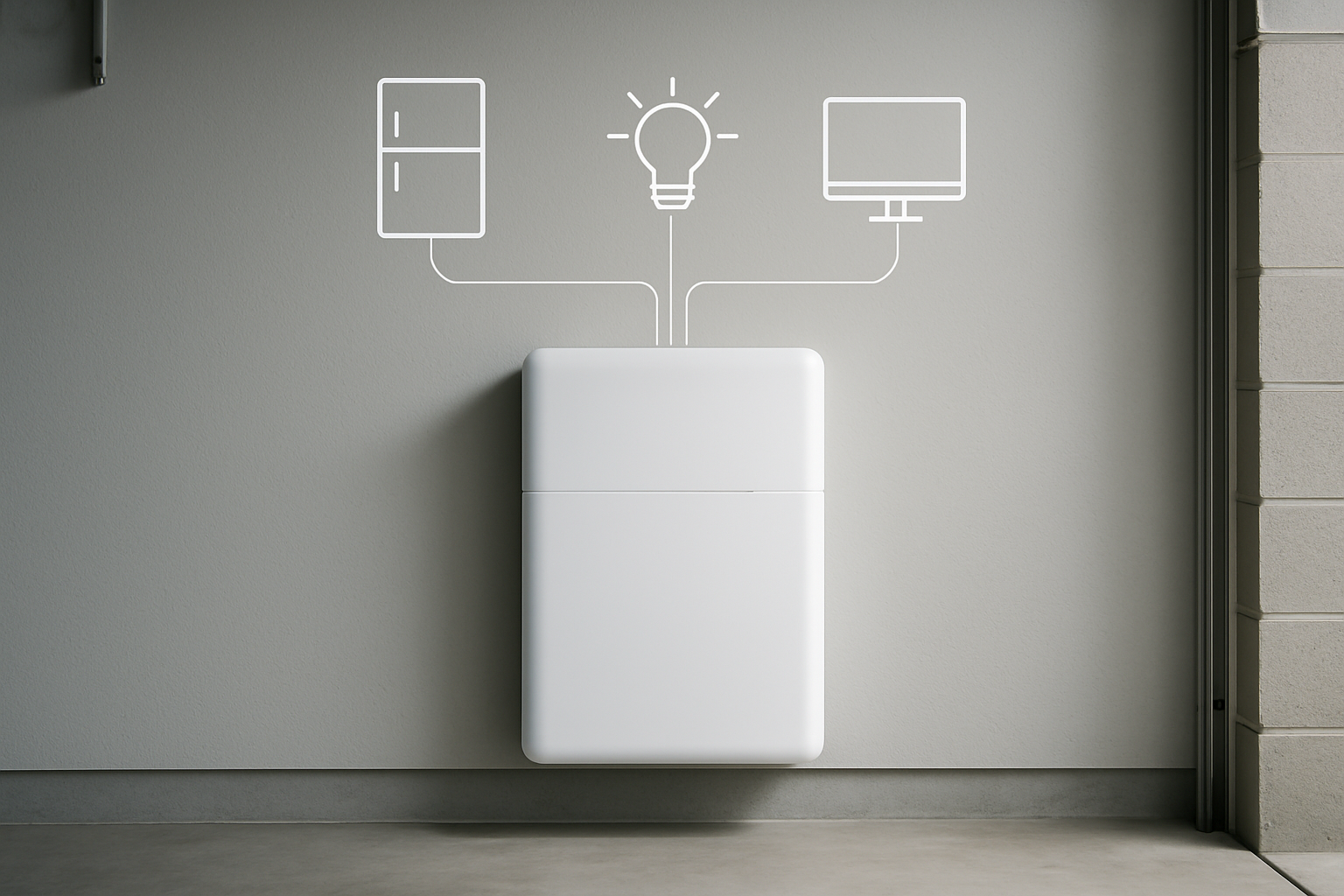A solar energy storage system is a balanced ecosystem. While much attention is given to solar panel output and battery capacity, the solar inverter sits at the center, directing the flow of energy. Choosing the right size inverter is not just about meeting your power demands; it is a critical decision that directly impacts how long your batteries will last during a power outage. An incorrectly sized inverter can waste precious stored energy, significantly reducing your backup duration.
Understanding the Core Function of a Solar Inverter
The solar inverter is the brain of your renewable energy system. Its performance dictates the reliability and efficiency of your entire setup, especially when you are relying on battery power. Getting the specifications right is fundamental to achieving energy independence.
More Than Just Power Conversion
At its most basic, an inverter converts the Direct Current (DC) electricity produced by your solar panels or stored in your batteries into Alternating Current (AC) electricity. This is the standard form of electricity used to power appliances in your home. Modern hybrid inverters also manage the flow of energy between your panels, batteries, and the grid, making intelligent decisions to optimize for self-consumption or backup power.
Key Inverter Specifications: Continuous vs. Surge Power
Every inverter has two primary power ratings:
- Continuous Power: This is the maximum power (measured in watts) the inverter can supply on a consistent basis. It must be high enough to handle the combined load of all the appliances you plan to run simultaneously.
- Surge Power: This is the maximum power the inverter can provide for a short period—typically a few seconds. This capability is crucial for starting appliances with electric motors, such as refrigerators or well pumps, which require a large initial burst of energy.
Understanding both ratings is essential for an accurate backup power duration calculation. If your inverter's continuous rating is too low, it will shut down when you turn on too many devices. If its surge rating is insufficient, it will fail to start your most critical appliances.
The Critical Link Between Inverter Size and Battery Efficiency
The relationship between inverter capacity and battery runtime is nuanced. It is not a simple case of 'bigger is better'. Optimal inverter capacity is about matching the equipment to your specific load profile to minimize energy waste.
How Inverter Capacity Influences Power Draw
Every inverter consumes a certain amount of power just to stay operational, even when no appliances are running. This is known as idle or tare consumption. An oversized inverter generally has a higher idle consumption than a smaller one. During a prolonged outage, this constant, low-level drain can add up, chipping away at your battery's state of charge and shortening your available runtime.
The Efficiency Curve: Finding the Sweet Spot
Inverters do not operate at peak efficiency across their entire power range. Most are most efficient when loaded to between 25% and 75% of their continuous capacity. If you install a very large inverter but only run a small load (e.g., a 5000W inverter to power a few LED lights and a router totaling 100W), it will operate at the low end of its efficiency curve. This inefficiency translates directly into wasted battery energy. A correctly sized inverter will operate in its peak efficiency zone more often, converting more stored DC energy into usable AC power.
The Risk of Undersizing: Nuisance Tripping and System Failure
The opposite scenario—installing an undersized inverter—is equally problematic. While it might be efficient, it will not be able to meet your power demands. If the combined running wattage of your appliances exceeds the inverter's continuous rating, or if an appliance's startup needs exceed the surge rating, the inverter's protective circuits will trip, shutting the system down. This leaves you without power just when you need it most.
A Practical Method for Sizing Your Inverter
A systematic approach to load calculation is the foundation of proper inverter sizing. This process ensures you select an inverter that is both capable and efficient for your backup needs.
Step 1: Calculate Your Critical Load Profile
First, identify the essential appliances you need to power during an outage. For each device, find its running watts and its starting (or surge) watts. This information is usually found on the appliance's nameplate or in its user manual. Create a list to organize this data.
| Appliance | Running Watts | Starting (Surge) Watts |
|---|---|---|
| Refrigerator | 200 W | 1200 W |
| LED Lights (x5) | 50 W | 50 W |
| Internet Router & Modem | 15 W | 15 W |
| Sump Pump | 800 W | 2000 W |
| Microwave | 1000 W | 1000 W |
Step 2: Determine Total Running and Surge Wattage
Next, calculate the total power your inverter needs to support. Add the running watts of all appliances you expect to use at the same time. For this example, let's assume everything but the microwave and sump pump runs continuously: 200 + 50 + 15 = 265 Watts. The highest single surge load is the sump pump at 2000 Watts.
Step 3: Applying the Formula for Optimal Inverter Capacity
To determine the optimal inverter capacity, use these calculations:
- Required Continuous Rating: Sum the running watts of all devices that could run simultaneously and add a 25% safety margin. For example, if you might run the refrigerator, lights, router, and microwave at once, the calculation is (200 + 50 + 15 + 1000) * 1.25 = 1581.25 Watts. A 2000W inverter would be a suitable choice.
- Required Surge Rating: The inverter must be able to handle the highest single surge load. In this case, the sump pump requires 2000 Watts to start. The chosen inverter must have a surge rating of at least 2000 Watts.
Advanced Sizing Considerations for Extended Runtime
Beyond basic load calculations, several other factors can help you refine your system for maximum performance and resilience.
DC-to-AC Ratio (Inverter Load Ratio)
The DC-to-AC ratio compares the power output of your solar array (DC) to the power rating of your inverter (AC). A ratio greater than 1:1 (e.g., 1.25:1) means your panels can produce more power than the inverter's rated output. According to a report from the IEA, slightly oversizing the solar array relative to the inverter can boost overall energy production, especially during periods of lower light, which helps keep batteries fully charged.
Grid-Forming Inverters for Enhanced Resilience
Modern technology is making backup systems more robust. Grid-forming inverters are a key innovation. These devices can create their own stable, localized grid during an outage. A project supported by the U.S. Department of Energy successfully demonstrated that systems using multiple grid-forming inverters could autonomously restart a grid after a complete blackout, a process known as a blackstart. This capability provides an exceptional level of reliability for a home energy storage system.
Integrating with LiFePO4 Battery Systems
The choice of battery technology also plays a role. High-performance batteries like Lithium Iron Phosphate (LiFePO4) are an excellent match for modern inverters. The stable discharge curve of LiFePO4 batteries, as detailed in performance guides like the Ultimate Reference for Solar Storage Performance, ensures the inverter receives a consistent voltage. This allows the inverter to operate more efficiently and reliably, preserving energy and extending its lifespan.
Putting It All Together for Maximum Backup Duration
Selecting the right solar inverter is a balancing act. It requires a careful analysis of your critical loads, an understanding of inverter efficiency, and a consideration of how the components of your system work together. A correctly sized inverter minimizes idle power drain and operates in its most efficient range, ensuring that every watt of stored energy in your battery is put to good use. This thoughtful approach to solar inverter sizing is the key to unlocking the longest possible battery runtime and achieving true energy security.
Disclaimer: This information is for educational purposes only. Consult with a qualified solar professional for specific advice related to your system design and local regulations. All investment decisions should be made with the guidance of a financial advisor.
Frequently Asked Questions
Can I use an inverter that is much larger than my needs?
You can, but it is often inefficient. A large inverter has a higher self-consumption (idle power draw), which can needlessly drain your battery, reducing your total backup time. It is best to size it closely to your calculated needs with a reasonable safety margin.
How does inverter efficiency affect my battery runtime?
Inverter efficiency measures how much DC power from the battery is successfully converted to usable AC power. An inverter with 95% efficiency wastes 5% of the energy as heat. Over many hours, this wasted energy adds up, shortening the time your battery can power your home. Choosing a high-efficiency inverter that operates in its peak efficiency range for your typical load is crucial.
What is the difference between a hybrid inverter and a standard solar inverter?
A standard solar inverter primarily converts DC power from solar panels into AC power for immediate use. A hybrid inverter, also known as a multi-mode inverter, is designed for energy storage systems. It can manage power from solar panels, a battery bank, and the electrical grid simultaneously, allowing it to charge batteries from solar or the grid and provide backup power during an outage.
Does the DC-to-AC ratio matter for an off-grid system?
Yes, it is very important. In an off-grid system, a higher DC-to-AC ratio (e.g., 1.2 to 1.5) allows your solar array to capture more energy during early morning and late afternoon, extending the battery charging window. This helps ensure your batteries are fully charged, maximizing the available energy for overnight use.





Leave a comment
All comments are moderated before being published.
This site is protected by hCaptcha and the hCaptcha Privacy Policy and Terms of Service apply.